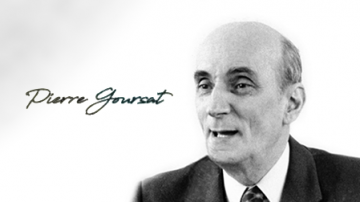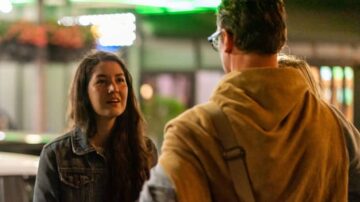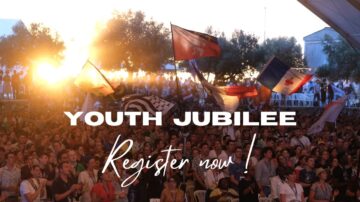Eucharistic miracles are often subjected to scientific expertise in order to be able to authenticate them or not. In Buenos Aires (Argentina), experts in the field have produced unimaginable results on a host that had bled.
An article taken from “Il est Vivant!” (He is Alive)
1996, in Buenos Aires (Argentina), a piece of host fell on the ground and started bleeding. But it was the medical analysis by a non-believer that gave an incredible proof.
On August 15, 1996, in the Parish of Santa Maria, a parishioner received the Consecrated Host in his hands during Communion, but inadvertently dropped it on the floor and thought not to pick it up because it seemed soiled to him. Another more pious person realized what had happened, picked up the host and put it aside, while quickly informing the Parish priest, Father Alejandro Pezet. The priest, following the instructions of the Church in these circumstances, put the Host in a container filled with water, which stayed in the tabernacle waiting for the Host to dissolve.
On August 26, the tabernacle was reopened to remove the fallen Host from the container, and it was found that the Host had not dissolved and had some reddish stains that were growing day by day. The Parish priests hurriedly went to the Archbishop of Buenos Aires, Cardinal Jorge Mario Bergoglio, to tell him what had happened. It was decided that they wait before proceeding with investigations. After the Archbishop learned that I was freely following these scientific investigations, he asked me to take care of the present case.
On October 6, 1999, I went to Buenos Aires and interviewed the five priests who witnessed the event and who told me that another host had bled in May 1992. They had put it in distilled water, which is the worst way to preserve something, and I was very concerned about that.
At the first miracle, the priests had a chemist among their parishioners who had been asked to analyze the Host. This professional chemist had discovered that it was human blood, revealing the presence of the various leukocytes currently known. She was surprised to find that the white blood cells were active.
However, she could not proceed with the genetic examination, because at that time it was not easy to carry out the tests. For my part, I took a sample of the two Hosts that had bled, in the presence of the archiepiscopal notary who certified the legality of this act, as requested by the Church authorities in Argentina.
On October 21, 1999 I went to the genetics laboratory which was doing the analyses of the samples I had brought. On 28 January 2000, the specialists found fragments of human DNA in the samples. They were human blood that contained human genetic code.
In March 2000, I was informed that the famous Dr. Robert Lawrence, a forensic histopathologist and one of the leading experts in tissue analysis, had participated in this study. The scientists explained to me that they had sought his collaboration. Dr. Lawrence studied the samples in which he found human skin and white blood cells.
In 2001, I went to Professor Linoli who identified the white blood cells and told me that the samples most likely matched heart tissue. The results obtained from the samples were similar to those of the studies carried out on Lanciano’s Eucharistic miracle. In 2002, we sent the sample to Professor John Walker at the University of Sydney, Australia, who confirmed that the samples had intact muscle cells and white blood cells, which normally disintegrate when they are out of the body for more than 15 minutes.
In September 2003, Professor Robert Lawrence confirmed to me that, in light of the new investigations, it could be concluded that the sample corresponded to the tissue of an inflamed heart, which meant that the person to whom it belonged must have been in great pain.
On March 2, 2004, in order to remove any doubt, we called in the leading expert in cardiac pathology and forensic medicine, Professor Frederick Zugibe of Columbia University, New York.
The professor didn’t know that the sample I was bringing him was from a Consecrated host. After studying it, he said, “The sample you brought me is a heart muscle, a myocardium, more precisely the left ventricle. “And he confirmed that my patient had suffered a great deal. So I asked him, “Why do you say that? “Because your patient has some thrombus, at certain times preventing breathing, oxygen supply, tiring and making the patient suffer because every breath had to be painful. He probably suffered a blow to the chest. On the other hand, cardiac activity was high at the time you brought me the sample. The white blood cells were found intact and these are only transported by blood. Therefore, if there are white blood cells, it’s because at the time you brought me the sample, it was beating. “The professor then asked me whose sample it was, and when we told him that it was from a Consecrated host, he said, “I don’t believe it. ” He was very impressed. “Doctor, when you brought me that sample, that heart was alive! »
His report was sent on March 26, 2005, 5 and a half years after the studies began, and the conclusions were as follows: “This is heart tissue: there are degenerative changes in the myocardium, which are due to the fact that the cells are inflamed; this concerns the left ventricle of the heart. “On March 17, 2006, I brought these results to Cardinal Jorge Mario Bergoglio.
Report of Dr. Ricardo Castañon Gomez







